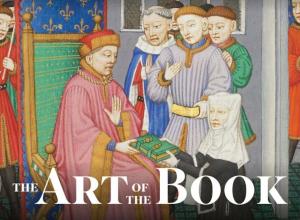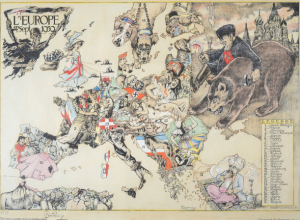September 2013 |
A Golden Age of Papermaking?
A couple of days ago, I received a number of questions from Gregory McNamee, a freelance writer who does book-related features for Britannica Online, for a piece he is doing about my forthcoming book from Knopf, On Paper. One of his queries--and he assures me he doesn't mind my using it in this context for the FB&C blog--went like this:
Has there ever been a "golden age" of papermaking, as there has been for so many other artistic endeavors? Perhaps put another way, does your heart warm in particular to any of the historic periods you write of in On Paper?
Truth be known, I don't think the question has ever been seriously raised before, at least not to my knowledge. From an artistic standpoint--if we're talking about craft and excellence of achievement, not necessarily volume--my initial response would be that a "golden age" of papermaking, if any such creature exists, would likely embrace that period before machines began to replace hand papermaking in the nineteenth century as the principal means of production, and before the introduction of chemically treated fiber from trees.
But old-salt journalist that I am, I decided to ask a couple of people whose judgment I respect in these matters--MacArthur Fellow Timothy D. Barrett, director of the Center for the Book at the University of Iowa and renowned authority on hand papermaking, and Sidney E. Berger, director of the Phillips Library at the Peabody Essex Museum, who with his wife, Michèle Cloonan, has assembled one of the finest collections of decorated papers in private hands--if they had any thoughts on the subject, and if they could do it in 150 words or less.
Here's what Tim had to say:
"I would venture to guess that all cultures/countries/regions have had periods when really excellent paper was made and what came afterwards was not as uniformly good. But tastes change and it depends on who you are talking to. It's kind of like asking, 'Was there ever a golden age of winemaking?' You can imagine the arguments that would ensue. Many book conservators would point to incunabula-era papermaking because much of the paper made then is still in excellent condition. More to that story of course. For me it was a golden era, but excellent paper was made afterwards, and still is."
And Sid:
"The Germans, French, and Italians in the 19th and early twentieth century created an unbelievable array of magnificent decorated papers--thousands upon thousands of them--using machinery and wood-pulp stock. Their papers were of every imaginable (and many unimaginable) designs, textures, colors, patterns, sheens, materials, and weights. These papers were used for millions of books and pamphlets, and the extent to which their decorative aesthetics went have never been equalled since the end of the First World War. Only the Japanese rival them for numbers of decorated papers and techniques. In fact, they are neck and neck in producing vast numbers of beautiful papers using every decorative technique known."
If any of you have your own thoughts, feel free to offer them on my author page on Facebook.















